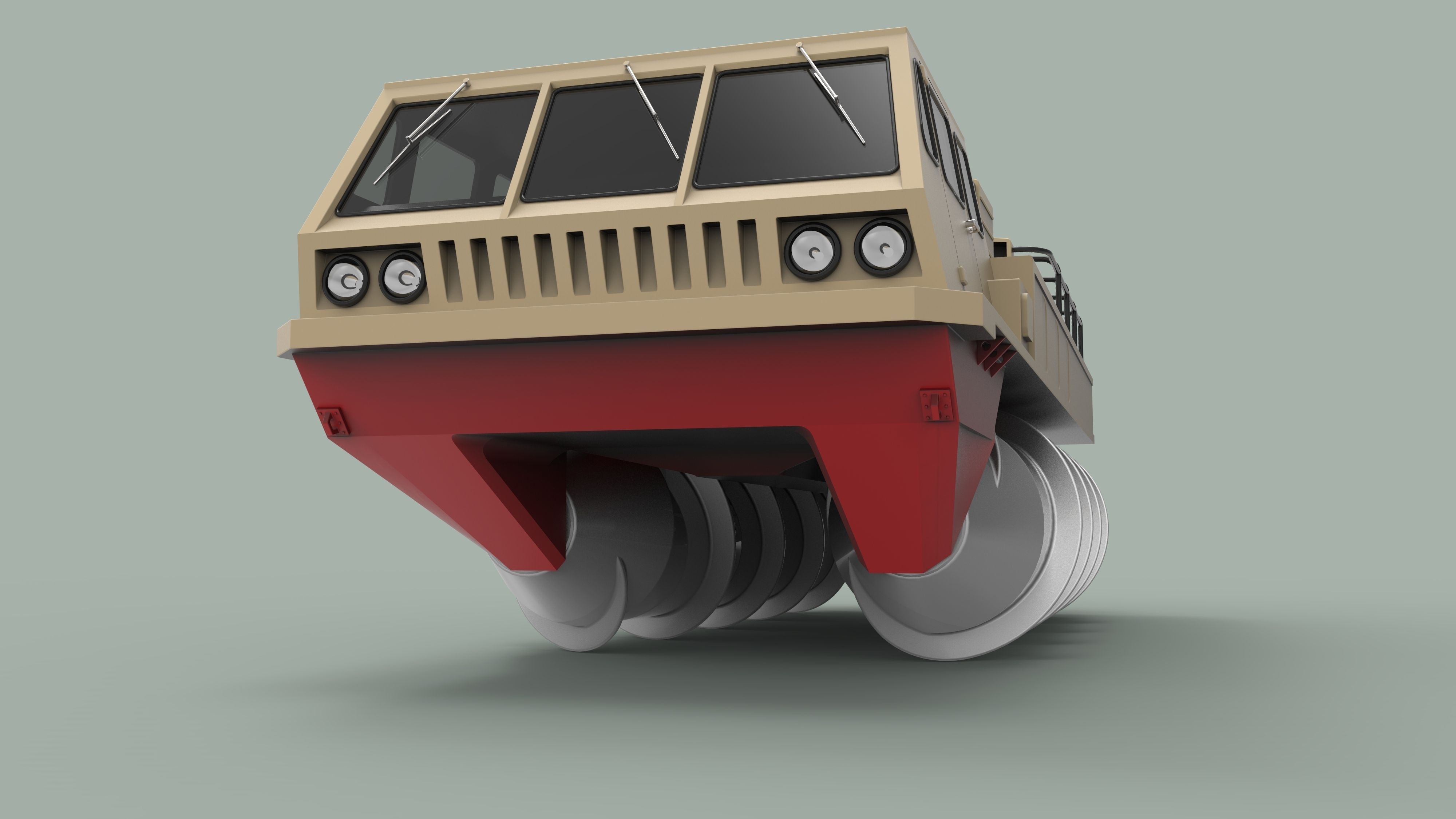
Screw terrain vehicle ZIL-4904 3D model
Please, feel free to offer your price. Use the special button at the top right.
A screw-propelled vehicle is a land or amphibious vehicle designed to cope with difficult snow and ice or mud and swamp. Such vehicles are distinguished by being moved by the rotation of one or more auger-like cylinders fitted with a helical flange that engages with the medium through or over which the vehicle is moving. Modern vehicles called Amphirols and other similar vehicles have specialised uses.The weight of the vehicle is typically borne by one or more pairs of large flanged cylinders; sometimes a single flanged cylinder is used with additional stabilising skis. These cylinders each have a helical spiral flange like the thread of a screw. On each matched pair of cylinders, one will have its flange running clockwise and the other counter-clockwise. The flange engages with the surface on which the vehicle rests. Ideally this should be slightly soft material such as snow, sand or mud so that the flange can get a good bite. An engine is used to counter-rotate the cylinders—one cylinder turns clockwise and the other counter-clockwise. The counter-rotations cancel out so that the vehicle moves forwards (or backwards) along the axis of rotation.The principle of the operation is the inverse of the screw conveyor. A screw conveyor uses a helical screw to move semi-solid materials horizontally or at a slight incline; in a screw propelled vehicle, the semi-solid substrate remains stationary and the machine itself moves.
Model dimensions:
- length – 8575 mm
- width – 3585 mm
- height – 2932,5 mm
Useful links:https://en.wikipedia.org/wiki/Screw-propelled_vehiclehttps://www.youtube.com/watch?v=_Z2AL34xpw0https://www.youtube.com/watch?v=lREoieCq_Cohttps://www.youtube.com/watch?v=HB_a5R6QjWE











